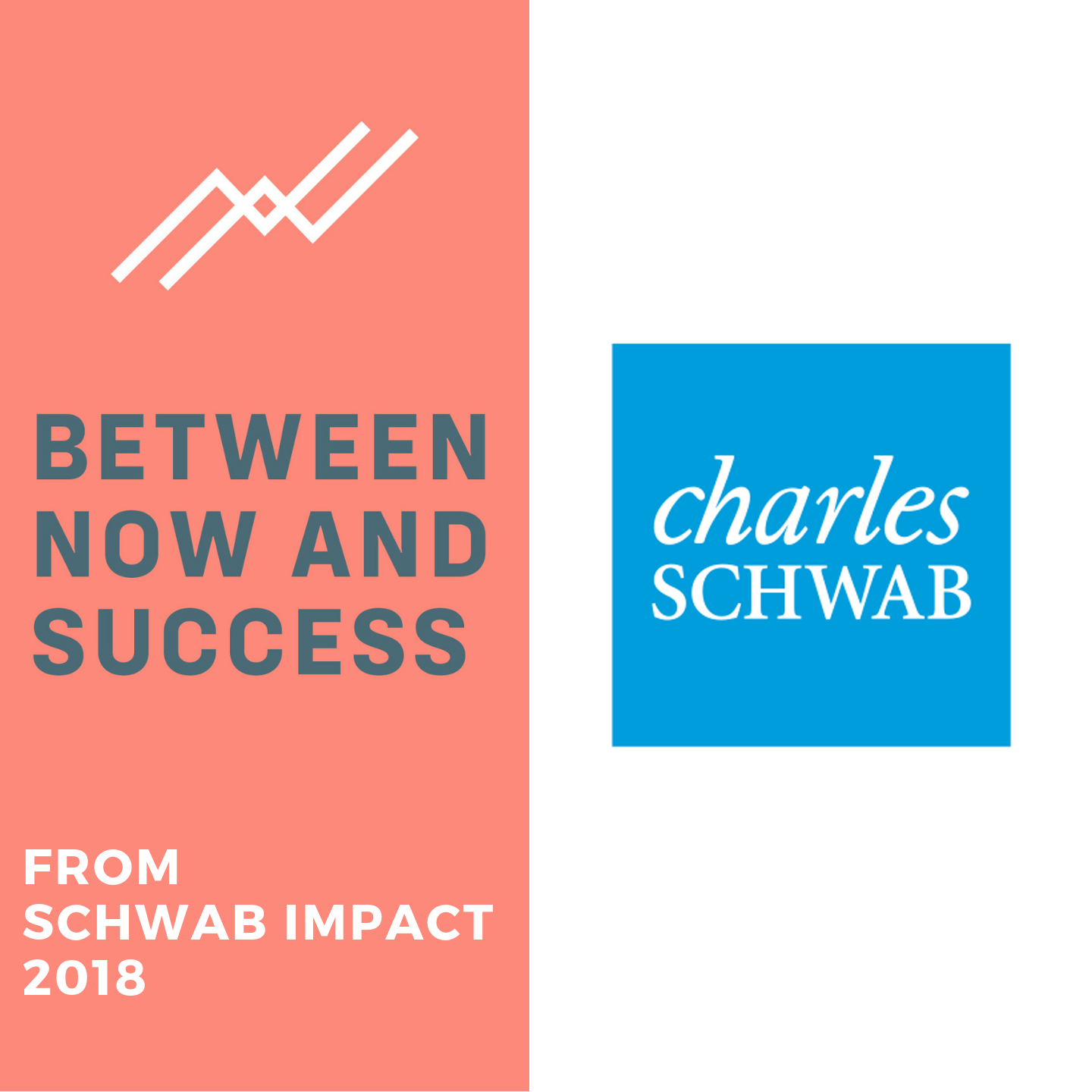What are the top firms doing to outperform the rest?
How are they growing?
What’s the silver bullet that’s going to help my firm hit that 16% five-year growth CAGR I’m seeing from the best of the best?
These were hot topics at last month’s Charles Schwab IMPACT Conference in Washington, D.C. And of course, the very reason that so many of our industry’s best and brightest were gathered there to speak, learn, and network is that there isn’t one “silver bullet” that’s going to transform your practice in 2019.
But some guiding principles for advisors looking to grow did emerge at the conference, which I discussed with Lisa Salvi, Vice President, Business Consulting and Education, Schwab Advisor Services. Lisa and I were joined by Mitch Reiner, Chief Operating Officer, Managing Partner, and Senior Investment Advisor of Capital Investment Advisors, who is a graduate of Schwab’s Executive Leadership Program.
To continue reading the rest of this post, please register below with your email address.
Top Insights from Charles Schwab IMPACT 2018
Effective planning leads to effective execution.
“Strategic planning is a leading indicator of success,” Lisa told me, “and I believe so strongly in the strategic planning process.” Digital marketing, social media, client-facing apps, automation platforms, and all the other big buzzwords in our industry are important. But what’s even more important is knowing what you’re trying to achieve with that new weekly e-newsletter, whom you’re trying to target with a fresh round of Facebook ads, and how all these initiatives build upon each other to get your firm closer to its targets.
This emphasis on planning had a big … well, impact on Mitch when he was working through the Charles Schwab Executive Leadership Program. 
“That was the first time that we got all the partners in a room to have a dedicated conversation about where we actually wanted to be a decade from now,” Mitch remembers. “The synchronizing of all of our thoughts, the alignment of understanding where we’re going, and what we had to accomplish at the halfway point, and what we had to accomplish at the quarter point, and what we had to accomplish over the next 12 months in order to make progress on that long-term goal put us all on the same page. We knew, A, where we wanted to be, and B, what needed to happen to get there. That was the first time when we began acting like a big business and not like a small lifestyle practice.”
Mitch’s business got big alright – $2.3 billion in AUM big. But to get there his team had to break down its 10-year vision into a 5-year action plan, and then break that down into annual goals, quarterly targets, and so on.
The Schwab program provides its participants with some example KPIs and dashboards to start with. But Lisa says that finding the metrics that will matter the most starts with company-wide planning that’s focused on your long-term goals.
“The strategic plan should be really well documented and well thought through, but every year you should have a business plan, and keep it alive even more frequently than that,” she says. “If you don’t have that execution piece, it could be a beautiful plan, but you’ve gotta put it into action and have that change happen.”

Mitch Reiner, Lisa Salvi, Steve Sanduski, CFP®
Value is defined through your clients’ eyes
Here are a couple eye-opening numbers: Lisa says that Schwab has found that firms who identify their ideal client and refine their value proposition to that client gain 26% more new clients and 41% more new assets.
But what does it mean to really know who your clients are? Most advisors target key demographics: age, income, maybe even a profession that’s big in your hometown. But Lisa believes advisors need to think about “psychographic” information as well:
“That’s everything from what kind of groups are they a part of, are they charitably inclined, do they have children? What drives them, what are their passions, where do they go to university? We actually encourage firms to not only define their ideal client persona, but name that ideal client. It starts to bring them alive. ‘What would Sally want us to do in this situation?’ It starts to reinforce that you’re building and evolving your entire business around that concept.”
So who is your “Sally?” What are her life goals? Does she have any serious hang-ups around money? What life experiences fed into those attitudes? What can you do to help Sally plan for a better financial future? How can you – uniquely – help Sally live the best life possible with the money she has?
When you start thinking about your clients as whole people, and answer questions like these, you don’t get just a clearer picture of Sally: you get a story, one that you can uncover during your discovery process, and one that you can use to enhance your marketing and online presence.
“We know our clients forwards and backwards,” Mitch says. “A 63-year-old couple that generally has a family, and they drive a 20-year-old Toyota Camry, they live in the suburbs, they have a million three in an old 401(k). They’ve been hard workers, generally, with just a couple of companies. They shop at Costco, they eat at Olive Garden, they wear black tennis shoes and white socks, they shop at Kohls.”
All of Mitch’s marketing, messaging, and communication is directed towards appealing to that 63-year-old couple. And when your firm is that zoned-in on your ideal client, an amazing thing is going to happen. Your ideal clients will self-select based on the value they put on your messaging, and therefore your firm. You won’t have to go find them. They’ll come to you, because they’ll feel like you’re talking directly to them.
People are your most important asset.
Lisa told me, “I was in a room of advisors the other week and I asked them, ‘How many of you are trying to hire?’ Every hand went up. Then I said, ‘How many of you are having a hard time hiring?’ And their hands went up much more enthusiastically.”
The labor market is as tight as it’s been in a very long time. Lisa says that the competition for talent is so fierce among RIAs that Schwab estimates 41% of new hires are coming from other advisory firms, up from 38% a year ago. Just like you want your ideal client knocking on your door, you want top talent coming to you because they understand what you’re all about and want to work for you. One glance at your website should be enough to tell potential hires who you are, who you’re serving, and what your workplace culture is like.
“In terms of hiring, when we do our annual planning process, we look out a year and say, ‘Here’s what we’re going to need,’ Mitch says. “Hiring used to be, when our hair was on fire, we’d have to go find somebody, right? Now we’re trying to plan out at least 12 months in advance, and defining what those positions are, look for the skillsets that we need to access in those positions, and then go hire them.”
At the top I said that there’s no silver bullet that’s going to transform your practice into the one you’ve always dreamed about overnight. But I will say this, the closest you can get to a silver bullet is to have a business plan and work that plan through flawless execution. Meaningful growth isn’t something that just happens on the fly. It’s a process that starts with advisors who are willing to put on their CEO caps, envision where they want to go, and put the steps in place that are going to get them there.
Resources
– Charles Schwab RIA Advocacy Learn more about Charles Schwab’s program for advisors who want to take their businesses to the next level.
– Capital Investment Advisors Visit Mitch and his team online.
– The ROL Index A tool Mitch Anthony and I developed to help advisors measure their clients’ well-being in 10 aspects of life.
– Values Clarification Toolkit Click here to download this FREE tool and start living your values.









